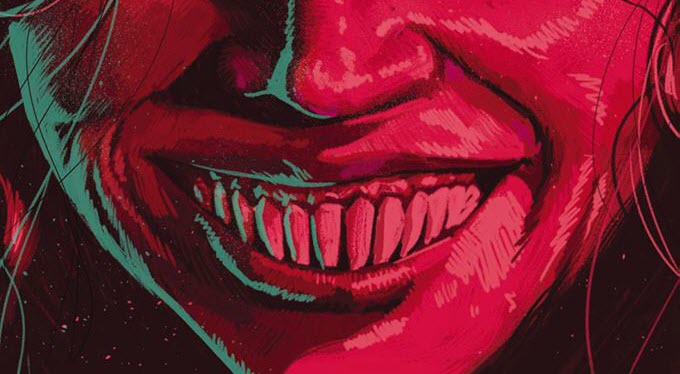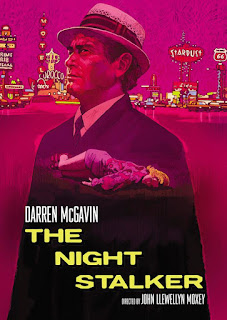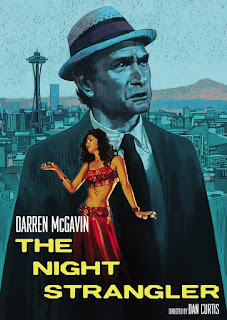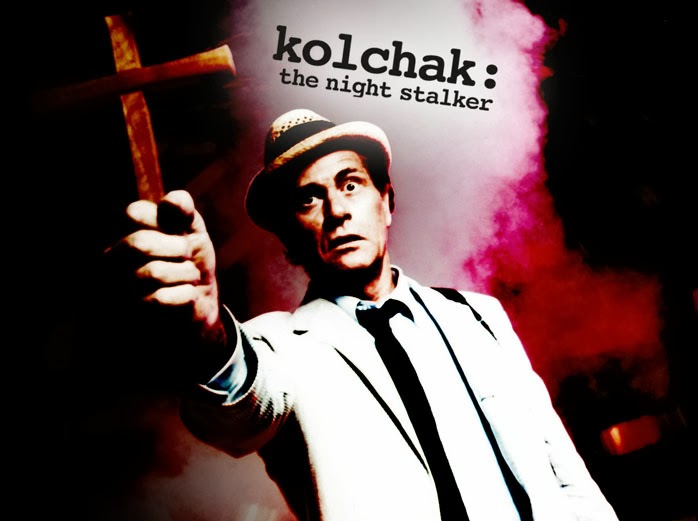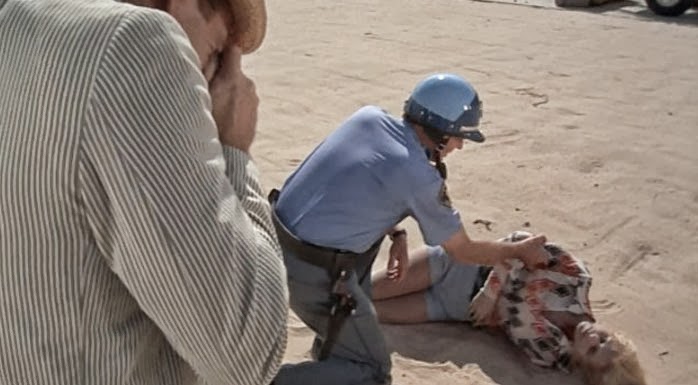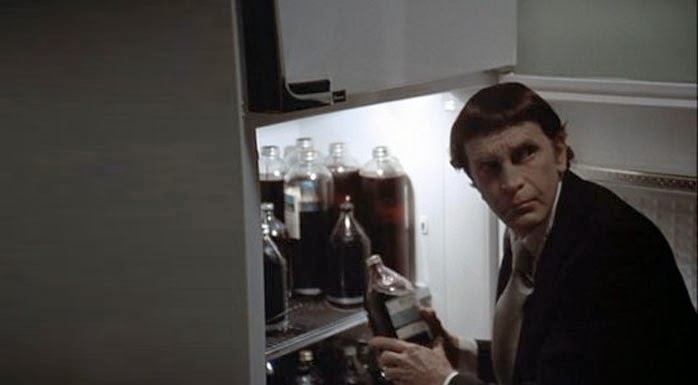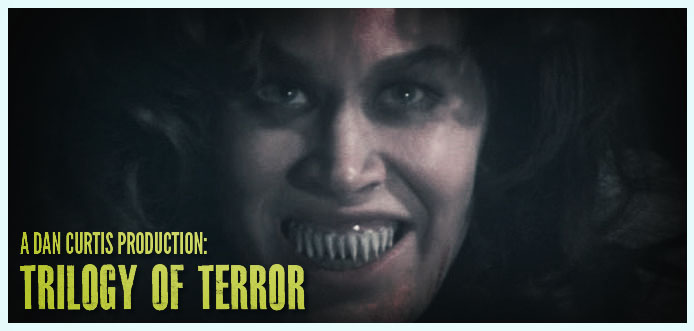TRILOGY OF TERROR has a venerable reputation among movie fans. Actually, it kinda has
two reputations. Ask one person about their opinion of the film, and they'll tell you it's pants-shittingly terrifying. Ask another, and they'll say it's pants-shittingly hilarious. Either way, when you watch
TRILOGY OF TERROR, you can expect pants to be shat. How they get that way is entirely up to you.
First broadcast by ABC in 1975, the movie was another notch in the belt of DAN CURTIS, who'd scored huge numbers for the network a few years earlier with THE NIGHT STALKER and THE NIGHT STRANGLER television features. TRILOGY re-teamed Curtis with writer RICHARD MATHESON, as well as
LOGAN'S RUN author WILLIAM F. NOLAN. The movie proved to be another hit.
But here's the thing: For a film called
TRILOGY OF TERROR, nobody seems to talk much about the first two stories in the anthology. And there's a reason for that .... they kinda suck. I don't think I'm alone in having forgotten the plots to the first two stories, which is surprising given how sleazy they are. The whole movie has a
DEEP THROAT ambiance about it, and the rape and incest plot points don't do much to class the place up.
As the title suggests, TRILOGY OF TERROR is an anthology of stories stories written by Matheson (with Nolan taking screenwriting duties on the first two stories in the "trilogy.")
KAREN BLACK plays the leading character in each tale. I've never given much thought to Black as an actress, but she shows tremendous range in the film. She plays predator and prey with equal authority, and I wish the script had given her a little more to work with at times. It's a rare actress who can be as scary as she is sympathetic, and the device of using her in all three tales only occasionally feels gimmicky.
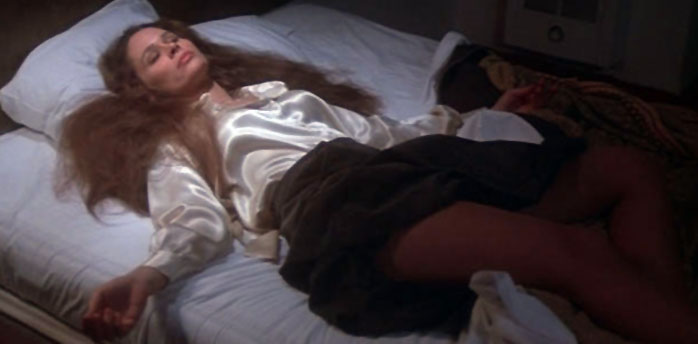 |
| This week on SEX OFFENDER THEATRE. |
In a lot of ways, the first tale, JULIE, is the most disturbing. Black plays an instructor at a college seemingly populated by grown men and women. Date-rape enthusiast Chad (Robert Burton) and his sidekick Eddie (
DARK SHADOWS alumnus
James Storm) are the only students we spend any time with, which doesn't speak well for the student body. One afternoon, Chad takes a sudden (and unexpected) interest in Black's mousey literature teacher. After a little recreational stalking, he pressures her into a date, taking her to a drive-in where a very DARK SHADOWS-looking feature is playing. While there, he roofies her drink, takes her to a motel, rapes her and photographs the assault. He later uses the photos to blackmail her into being his sex slave, even inviting some unseen "friends" to one party. If you want to go take a shower, I'll wait.
The plot twist? Chad was under
Julie's control the entire time. Though it's not explained how (is she a demon? a psychic?) Julie is the one who prompted Chad's interest in her. He's been her unwilling puppet in this elaborate role playing adventure. She poisons him while informing him of the real nature of their relationship, then burns his house down. We get a look at her scrapbook in the final seconds of the story, showing us that Chad was far from her first "victim."
The second tale, MILLICENT AND THERESE, ramps up the sleaze factor by injecting incest into the festivities. I don't think it's much of a spoiler to reveal Millicent and Therese are the same person, both played by Black. While there's a certain mystery about what's
really happening, the costuming spills the beans about the "sisters" from the outset. When Millicent starts railing about her horrible, wicked rival Therese, it's pretty obvious from the outset that she's talking about herself. The mystery is why everybody seems to be playing along with the flimsy charade.
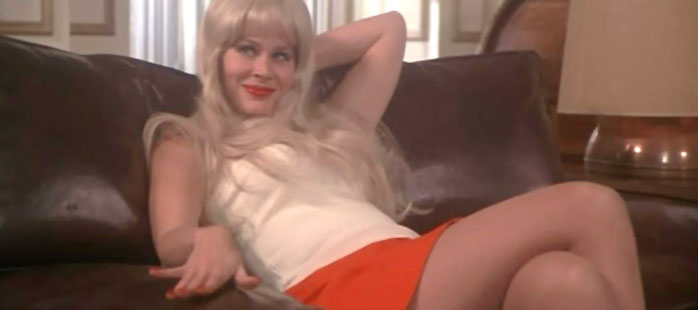 |
| Besides the obvious reasons, that is. |
Years ago, we learn, Millicent/Therese had sex with her father and then killer her mother. She didn't cope with her own behavior well, and developed a case of Hollywood Split Personality Disorder to deal with it. JOHN KARLEN (Willie Loomis of DARK SHADOWS) makes a guest appearance as Black's boyfriend, who is in way over his head. In the end, Millicent grows tired of Therese's bullshit and uses a voodoo spell to kill her, essentially committing suicide.
The real problem with these two stories is they lack a second act. Their short nature makes this kind of structure difficult, but certainly not impossible. Both stories spend a lot of time introducing the concept, but drop the hammer way too quickly on the climax. Neither are especially effective, even though Black does a great job in both. She's hampered a bit by the costuming of MILLICENT AND THERESE, which portrays the "wicked" twin like a Hollywood prostitute, complete with bad make-up, wig and cheap skirt. That being said, the cartoonishly timid Millicent isn't exactly plausible, either. There's a good idea in the story, but the script can't seem to find it.
Which brings us to the real star of the show, the Zuni Fetish Doll of AMELIA. While the first two stories lacked second acts, the show-stopper is ALL third act. There's hardly any set-up to the story: Amelia buys a Zuni Fetish Doll for her boyfriend, gets into an argument with her mother over the telephone (Dan Curtis has a profound love of characters who "appear" only by phone) and spends the bulk of the episode defending herself from a glorified action figure.
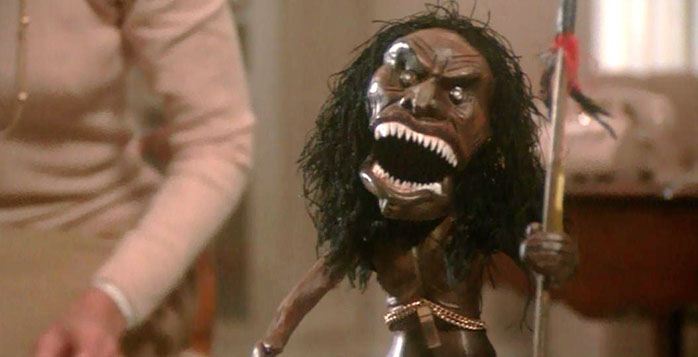 |
| The TICKLE ME GENE SIMMONS doll wasn't a big seller last Christmas. |
This is the moment when horror and hilarity unintentionally collide. I revisited the film last night for the first time in more than 30 years, and was bracing myself for what was to come. The Zuni Fetish Doll was potent nightmare fuel when I was a child, and came close to rivaling Fats from RICHARD ATTENBOROUGH's 1978 film
MAGIC for the title of "World's Scariest Puppet."
While it still maintains a certain creepiness, I spent most of the episode with a grin on my face. I wasn't so much laughing
at the movie as
with it (though I still don't know how the fuck that doll was able to use a door knob.) It's a really fun segment that's saturated with gleeful, manic absurdity. The funniest moments are also the most nightmarish, such as how the doll uses a kitchen knife to solve its every problem. The doll is bloody rage personified and
never, ever slows down. It's also kind of adorable, even when it's cutting Karen Black to ribbons.
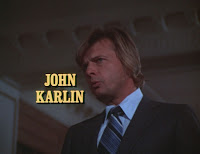 RANDOM THOUGHTS:
RANDOM THOUGHTS: For reasons I can't quite say, JULIE plays a bit like a porn parody of COMMUNITY, with Robert Burton in the role of Jeff Winger. I think James Storm would have been more effective in the part, and not just because I'm a DARK SHADOWS fanatic. He might be the nicest guy in the world for all I know, but he's got a cruel, Marlon Brando-esque face and would have been less doofy in the part of aspiring sexual predator. Burton looks less like a college student, and more like the manager of a car stereo business.
John Karlen is incorrectly credited in the title sequence as John KARLIN, which seems odd given his long relationship with Dan Curtis. He's more or less wasted in the film, anyway.
The explanation for the Zuni Fetish Doll coming to life is a little thin. A chain around it's waist is supposed to keep it's soul in check, but manages to fall off by itself. Still, it's so much fun watching the little scamp begin his rampage that I didn't care. Also, Karen Black's body language in the film's final "possession" scene is pretty great. While she came to regret making the movie, she's clearly having a lot of fun on screen.
TRILOGY OF TERROR was based on three unrelated short stories by Richard Matheson. The 1962 short story "The Likeness of Julia" was published in his anthology ALONE BY NIGHT, "Needle in the Heart" was published in Ellery Queen’s Mystery Magazine in 1969, and "Prey" first appeared in an issue of Playboy that same year.

